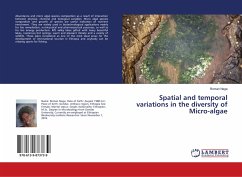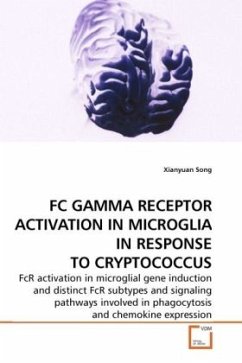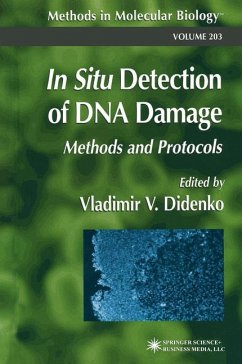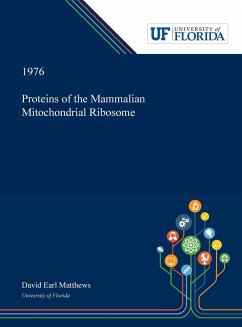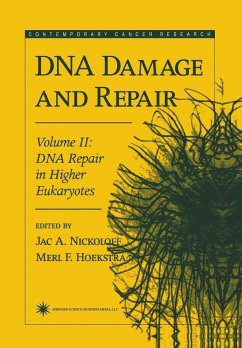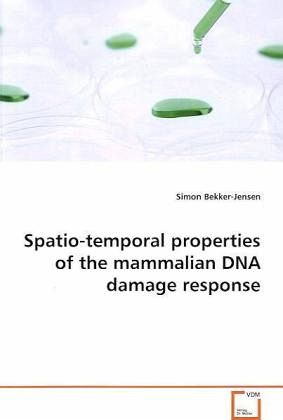
Spatio-temporal properties of the mammalian DNA damage response
Versandkostenfrei!
Versandfertig in 6-10 Tagen
45,99 €
inkl. MwSt.

PAYBACK Punkte
23 °P sammeln!
In this work, the author reviews the current statusof our knowledge about the cell cycle and the DNA damage response,followed by presenting his own scientific contributions to thesefields. The reader is introduced to the complex issues of how cells divideand deal with damage to their DNA, in general and easy-to-readterms. In addition, a dedicated section of the book describes microscopybased tools to study these phenomena, such as the application of DNAdamage in defined areas of the nucleus by lasermicroirradiation and studies of protein mobility by photobleaching techniques. Thismore technica...
In this work, the author reviews the current status
of our knowledge
about the cell cycle and the DNA damage response,
followed by
presenting his own scientific contributions to these
fields. The reader is
introduced to the complex issues of how cells divide
and deal with
damage to their DNA, in general and easy-to-read
terms. In addition, a
dedicated section of the book describes microscopy
based tools to
study these phenomena, such as the application of DNA
damage in
defined areas of the nucleus by laser
microirradiation and studies of
protein mobility by photobleaching techniques. This
more technical
part of the book is supplemented with a detailed
outline of
mathematical frameworks to analyze the ensuing data
and deduct
biological meaningful knowledge from them. The
authors own papers,
which are sequentially presented and discussed in
broader terms, were
published in high impact factor journals such as
Nature Cell Biology,
Molecular Cell and Journal of Cell Biology.
of our knowledge
about the cell cycle and the DNA damage response,
followed by
presenting his own scientific contributions to these
fields. The reader is
introduced to the complex issues of how cells divide
and deal with
damage to their DNA, in general and easy-to-read
terms. In addition, a
dedicated section of the book describes microscopy
based tools to
study these phenomena, such as the application of DNA
damage in
defined areas of the nucleus by laser
microirradiation and studies of
protein mobility by photobleaching techniques. This
more technical
part of the book is supplemented with a detailed
outline of
mathematical frameworks to analyze the ensuing data
and deduct
biological meaningful knowledge from them. The
authors own papers,
which are sequentially presented and discussed in
broader terms, were
published in high impact factor journals such as
Nature Cell Biology,
Molecular Cell and Journal of Cell Biology.





